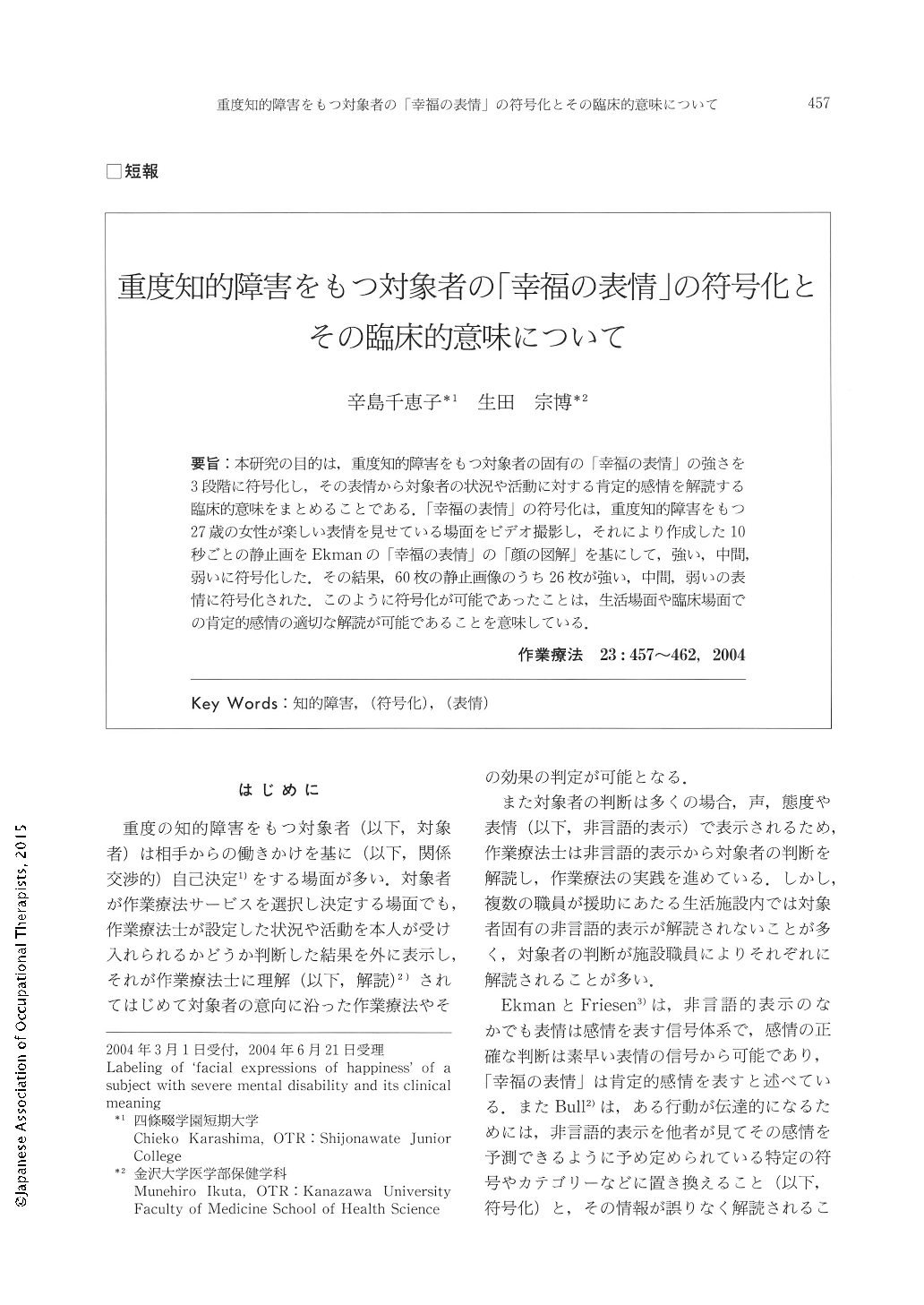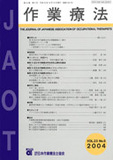Japanese
English
- 販売していません
- Abstract 文献概要
- 1ページ目 Look Inside
- 参考文献 Reference
- サイト内被引用 Cited by
要旨:本研究の目的は,重度知的障害をもつ対象者の固有の「幸福の表情」の強さを3段階に符号化し,その表情から対象者の状況や活動に対する肯定的感情を解読する臨床的意味をまとめることである.「幸福の表情」の符号化は,重度知的障害をもつ27歳の女性が楽しい表情を見せている場面をビデオ撮影し,それにより作成した10秒ごとの静止画をEkmanの「幸福の表情」の「顔の図解」を基にして,強い,中間,弱いに符号化した.その結果,60枚の静止画像のうち26枚が強い,中間,弱いの表情に符号化された.このように符号化が可能であったことは,生活場面や臨床場面での肯定的感情の適切な解読が可能であることを意味している.
The purpose of this study was to attain the clinical meaning of interpreting positive feelings of a subject with severe mental disability toward the situations or activities in which she was engaged by labeling the intensity of her own 'facial expressions of happiness' into three groups. The scenes in which the 27-year-old subject was showing her happy facial expressions were videotaped, and still pictures made every 10 seconds from the videotape were labeled based on Ekman's 'Pictures of Facial Affect' of 'facial expressions of happiness' as 'Strong', 'Medium' and 'Weak'. As a result, twenty-six pictures out of sixty were labeled as 'Strong' or 'Medium' or 'Weak'. This labeling indicates that it is possible to interpret appropriately her positive feelings in a clinical setting or in a daily life setting.

Copyright © 2004, Japanese Association of Occupational Therapists. All rights reserved.


